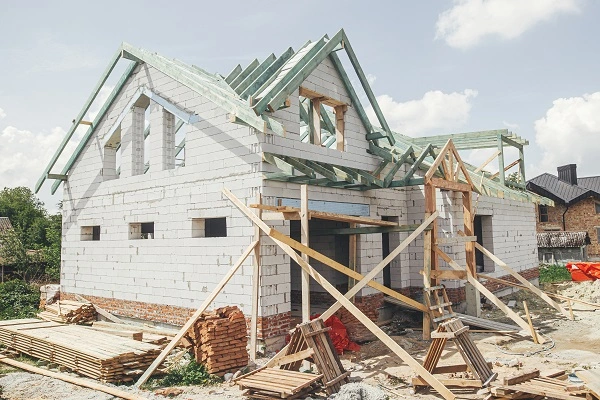Your site must be ready before beginning construction. This involves clearing away land and brush, grading, leveling, and demolishing projects as necessary, demolishing remaining structures on site as necessary, demolishing old sheds, etc. These tasks are key steps in the construction process, as using appropriate site preparation techniques can ensure smoother project execution.
This tutorial covers site preparation to protect everyone during construction, from building tasks to the type of equipment that might be necessary.
Sitework Estimating Services in construction refers to any work required to prepare a site for building.
Sitework and land development tasks vary in scale depending on the project. But they’re always necessary. Whether creating a large mixed-use complex or building one single-family home.
Once all permits and entitlement have been obtained through pre-development.
Sitework can begin in the development and construction stage of real estate development.
Effective land development will guarantee the success of vertical building by providing the foundation necessary for safe construction according to your project site design.
Type of Site Works for Construction
Not every project necessitates every kind of site work. Environmental conditions, a municipality’s standards, and parcel-specific features determine exactly which efforts must occur before construction begins.
A building project should consider standard land development tasks that apply to most projects.
Construction Staking
Staking refers to physically marking and charting land according to an approved site design plan or site layout survey, also known as construction staking.
Staking is an essential precursor to construction projects. It ensures that physical improvements are of their respective heights and conform to any site development plans.
Grading and Excavation of Land
Once cleared and staked, the property must be graded for building. Excavation will remove extra dirt and rocks from its location.
Land clearing involves removing trees, bushes, and large visible rocks from an area to make it suitable for building purposes and facilitate future land development projects.
Grading refers to leveling or shifting soil at specific gradients to build roadways, lay foundations, and make other adjustments that prepare a site for building.
Additional fill dirt may be necessary to achieve the precise elevations specified in a site development plan, depending on the topographical features of your property.
Unfortunately, that will not happen anytime soon.
Control of Erosion
A key aspect of land development is erosion management. Construction sites produce vast quantities of sediment runoff during site work and construction; controlling it is, therefore, imperative for preventing pollution and any negative repercussions for nearby properties.
Fiber logs, silt barriers, and plant buffers have proven themselves as temporary sediment and erosion control techniques.
Services
Buildings receive access to water, sewage, gas, electricity, and storm drainage when their utilities are installed. Utility work varies depending on which utilities already exist near a given site.
Connecting public utilities requires work. Suppose the utilities are offsite and challenging to reach from your plot. In that case, utility lines will have to be extended from the development to connect with them, and modifications could also be needed.
If you lack access to utilities, installing alternative systems such as wells and septic tanks is a viable solution that should be considered.
Stormwater Retention
Retaining stormwater is an essential element of land development and should form part of an overall site development strategy.
Rainfall runoff increases when land is developed due to impermeable surfaces like roads and buildings built during development. Furthermore, inadequate routing and collection of stormwater runoff often result in accumulation in streams or other bodies of water, further contributing to pollution.
Land development must incorporate some kind of detention or retention system to mitigate stormwater runoff effects and limit their adverse consequences.
Offsite Enhancements
Offsite improvements are integral to real estate development projects, typically necessitating work outside the property limits.
Projects may necessitate changing public utilities, altering pedestrian and vehicle traffic patterns, and possibly making adjustments that conform with municipal requirements. If a property is developed, offsite modifications might also need to be undertaken by municipal rules.
These upgrades must be part of a real estate developer’s site development plan.
Building Pad & Foundation
Preparing the pad provides a sturdy base upon which a structure can be built. Protecting against weather erosion and any significant machinery impacts that might arise during its creation. These pads should also withstand weather-related erosion for long-term stability and use.
A practical pad must be through small, repeated steps of filling and compacting earth to prevent fissures and structural damage.
Once the site has been graded and building pads constructed. Roadways and parking lots should be constructed to facilitate fast construction while protecting against erosion and maintaining safety.
Even though the construction of parking and paving structures won’t begin until after. Site work typically includes significant portions of their foundations.
Lawn Cutting
Many real estate development projects necessitate specific horticultural work on a property to complete its development process.
Land development includes more than simply planting grass and trees – it includes installing irrigation systems as part of land development planning.
Carefully consider when it comes to selecting essential landscaping elements for any project.
What Will Site Prep and Land Development Cost?
Understanding the complexity and costs of for real estate developments may be a daunting task. Unexpected expenses typically pop up during due diligence, making cost estimation challenging to pinpoint exactly.
Real estate professionals frequently make distinctions between hard and soft expenses when discussing development budgets. However, this distinction is less effective for predicting individual expenses per phase than overall budget control.
Therefore, when estimating site work expenses, you must apply a different approach.
As a contractor, creating accurate estimates is one of the key elements of your work. Inaccurate estimates can cause serious problems that risk damaging your reputation and possibly costing you money at work.
Investing in learning to accurately calculate building and land development expenses so you can provide clients with the information needed to make wise choices.
How can you calculate prices associated with developing land or building projects?
Here are a few pointers:
- Be mindful of your expenses. Though this is straightforward, you must know all of your expenditures before trying to estimate those of others. When estimating project expenses, be certain to consider all costs related to labor, supplies, and overhead. Various applications on the market can assist in estimating building and land development expenses, providing accurate quotes by entering details about your job into one of these applications.
- Get help from an expert. If you’re having difficulty estimating expenses on your own, consulting firms specialize in this area and can help you better understand the process and provide accurate estimates. Professional construction estimating services is a good answer.
- Utilize past information. Starting a new building project often leaves us with limited data. Therefore, cost estimation should rely on historical figures from similar projects such as official documents or internet databases.
What is site work in construction essential?
Conducting site work tasks both before and during building construction is of great significance to ensure a solid foundation. This eliminates risks such as soil erosion or water seepage that might undermine it. It also ensures no delays due to undiscovered hazards occurring unexpectedly during construction.
When sitework is executed incorrectly, it can cause severe structural damage and drainage problems on or around a property. Typically stemming from inappropriate building sites. Many contractors also offer other services like creating land survey maps and locating utilities before construction begins. Site work estimation is a great way to make sure a construction project is completed on time.





